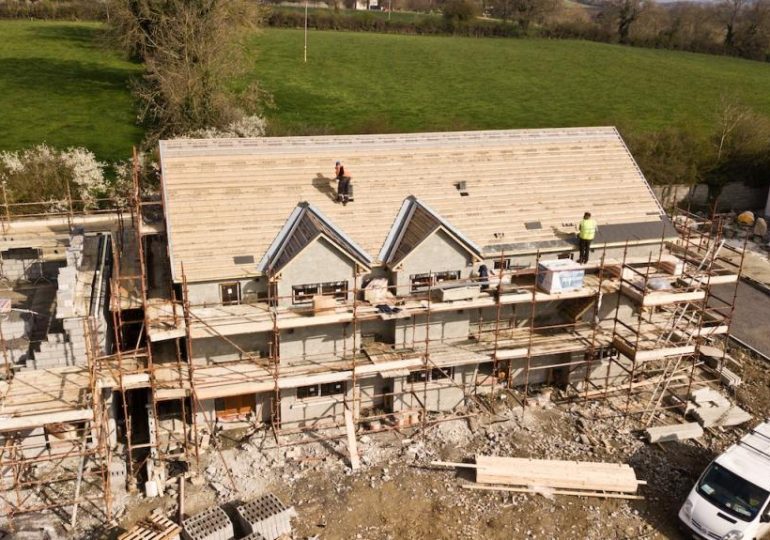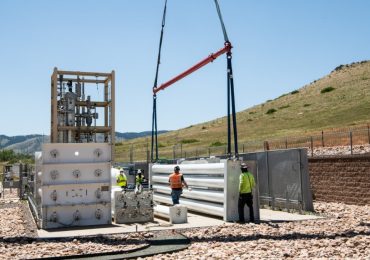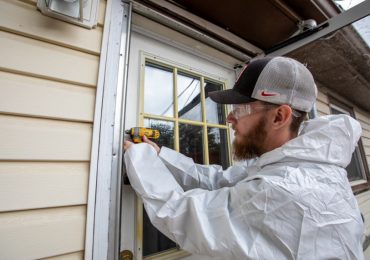Reality is setting in for clean energy advocates and building professionals who’d long sought to bring North Carolina’s outdated home energy code up to modern standards: the revamp isn’t happening.
Under a law passed earlier this year by the Republican-led legislature, requirements for windows, insulation thickness, and other building features can’t be overhauled until 2031 — even if a recent lawsuit by the Democratic governor, contesting a separate provision in the statute, gains traction.
But while experts widely condemned the new law, they say there are still chances — albeit less far-reaching ones — to advance building efficiency in the state in the years to come.
“It’s unfortunate when you waste an opportunity to save money, to create jobs for energy efficiency, and reduce emissions,” said Luis Martinez, Asheville-based director of southeast energy for the Natural Resources Defense Council. “That triple win is the reason we seek energy efficiency.” But, he added, “the story doesn’t end there.”
‘Energy codes are the key component’
Reducing energy waste in buildings, especially homes, is a critical component of the clean energy transition.
Dwellings are the largest source of electricity demand, according to the state’s Clean Energy Plan, and their 44% share is growing with the state’s population. The less electricity these buildings require, the fewer carbon-free energy sources are needed to replace shuttering fossil fuel plants.
The potential to ramp up energy efficiency in North Carolina homes is vast. A 2017 study from the National Renewable Energy Laboratory, for instance, found that more efficient heating and cooling equipment, added insulation, and other measures could cut energy use in single-family homes by 31%.
Without question, the easiest and most cost-effective way to begin fulfilling that potential is through more stringent standards at the point of construction for insulation and other features for the 90,000 new homes built in the state each year, most of them single-family units.
“In terms of new build, new construction, energy codes are the key component,” said Cherylyn Kelley, manager of building energy codes and policy at the Institute for Market Transformation.
To make energy efficiency improvements later, she said, “you end up spending more money; it’s more invasive. … It’s just more annoying. Contrast that with energy codes: you have all those improvements built into the home from the outset.”
Yet the powerful home construction lobby has resisted stronger requirements for years, influencing the state legislature, where it is a major campaign donor, and the state’s Building Code Council, a citizen commission historically populated mostly with builders and their allies.
While international model guidelines are updated every three years, North Carolina’s rules still resemble those from 2009. So, even when the council looked poised earlier this year to bring the code in line with 2021 guidelines, some observers were skeptical.
“I’d given up all hope that they would change it,” said Amy Musser, a green building consultant in Asheville.
In fact, before the council finished its work, lawmakers backed by developers intervened to circumvent the update. Though Gov. Roy Cooper vetoed House Bill 488, the Republican supermajority, joined by a half dozen Democrats, overrode him easily.
‘Significant opportunities…to save’
The law allows discrete amendments to the building code in 2026. Still, most advocates are turning their attention elsewhere to advance building efficiency in the coming years.
While targeting new home construction is the most cost-effective way to improve efficiency, it’s not the only route. Existing housing stock approaches 5 million units in the state, according to Census data. And since minimum energy conservation standards have lagged, there’s plenty of room for improvement.
“For people that live in a newer home that’s only 10 or 15 years old, there may still be really significant opportunities for them to save,” said Jennifer Amann, a senior fellow at the American Council for an Energy-Efficient Economy. “That’s especially true in North Carolina, where the code hasn’t kept pace with other states.”
The 2017 study on energy efficiency potential found that replacing electric furnaces with heat pumps would produce the most savings statewide, at $800 million a year. A technique for increasing wall insulation called “drill and fill” was a distant second, offering almost $300 million a year.
Replacing worn-out equipment can pay for itself within five years, in some cases, according to the analysis. The math looks even better when coupled with enticements for energy efficiency improvements under the Inflation Reduction Act, which authorizes tax credits and $208 million worth of direct rebates to North Carolina.
“It’s a very lucrative time for folks to be thinking about what they can do in their homes,” Aman said. “This might be a great time to go out and get an audit.”
‘The way we market our services’
Last year’s federal climate law also increased incentives for builders to go above and beyond the minimum code: a $5,000 tax credit for ultra-efficient homes built to “Zero Energy Ready” standards and a $2,500 credit for those meeting Energy Star guidelines. The requirements for the latter vary by state.
A less robust version of these tax credits have been around since 2006, and Energy Information Administration data from 2011 showed the height of their popularity in North Carolina, when more than a quarter of new single-family homes met Energy Star criteria.
The initial tax credit has faced uncertainty, and in 2019, the state’s share of Energy Star-certified single-family homes dropped to one in 10. But green building consultants are bullish on the future, with the tax credit expanded and now extended to 2032.
“[It’s] a really important incentive that’s helped drive building efficiency forward,” said Brandon Pendry, a spokesperson for Southern Energy Management, an energy rater and solar installer.
In Duke Energy territory, builders can also get rebates of up to $9,000 for homes meeting a standard called the High-Efficiency Residential Option, or HERO. “We’re big advocates of HERO,” Pendry said via email. “It’s been a great tool for helping homes become more energy efficient.”
Clients can and often do combine federal incentives with Duke’s program, said Musser. “It’s the way we market our services,” she said.
To be sure, the code proffered by the Building Code Council early this year would have been even more efficient than HERO, rendering it moot or in need of updating. But with that code proposal now rejected by lawmakers, Duke says the program will endure.
“We plan to continue offering this cost-effective program that promotes the construction of new high-efficiency housing stock,” company spokesperson Keith Richardson wrote in an email.
Richardson didn’t provide numbers of houses that had taken advantage of the program, but said it resulted in over 7,000 “energy saving measures” being implemented in 2022, earning builder rebates of over $17.4 million.
Carrots vs. sticks
To be sure, all these incentives — whether to homeowners who perform energy efficiency upgrades or builders who exceed the minimum code — are carrots that rely on hungry, educated consumers.
But there is one potential stick on the horizon, said Martinez of the Natural Resources Defense Council: Duke Energy’s Carbon Plan. The company must win approval from regulators every two years for its blueprint for zeroing out its carbon emissions by 2050, and energy efficiency is one small part of that strategy.
“The last time around, they encouraged Duke to increase the amount of energy efficiency from 1% of sales to 1.5% of sales,” Martinez said.
A stronger mandate from regulators to ramp up efficiency would prompt Duke to beef up HERO and other energy efficiency programs, including those targeted at low-income customers, to achieve carbon reductions required by law.
“We should be doing at least 1.5% of sales,” Martinez said, “if not more.”
With N.C. home efficiency codes frozen, advocates eye other opportunities is an article from Energy News Network, a nonprofit news service covering the clean energy transition. If you would like to support us please make a donation.
Leave a comment









